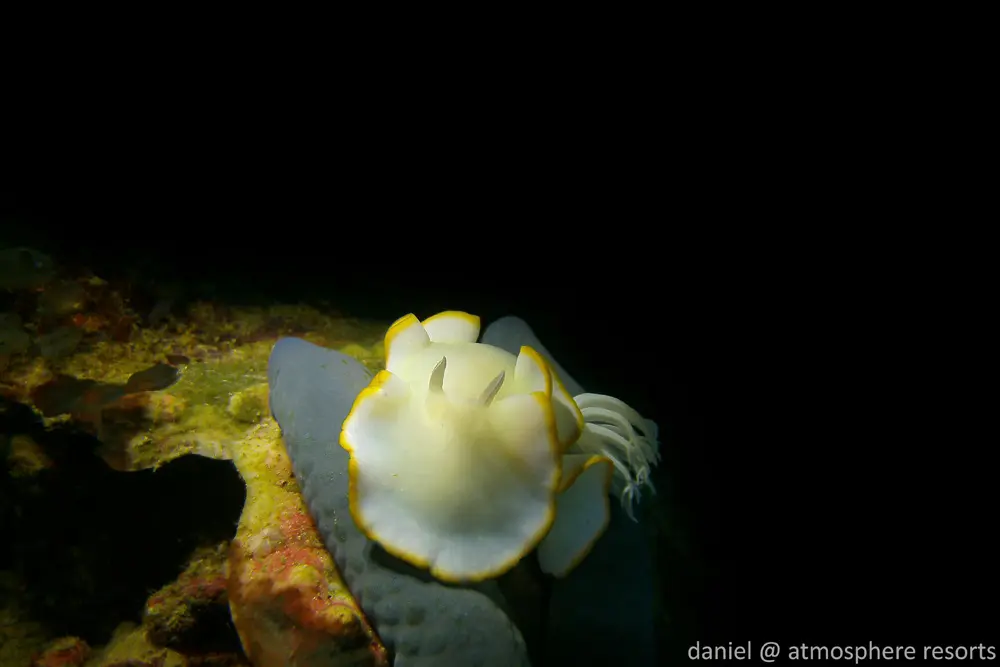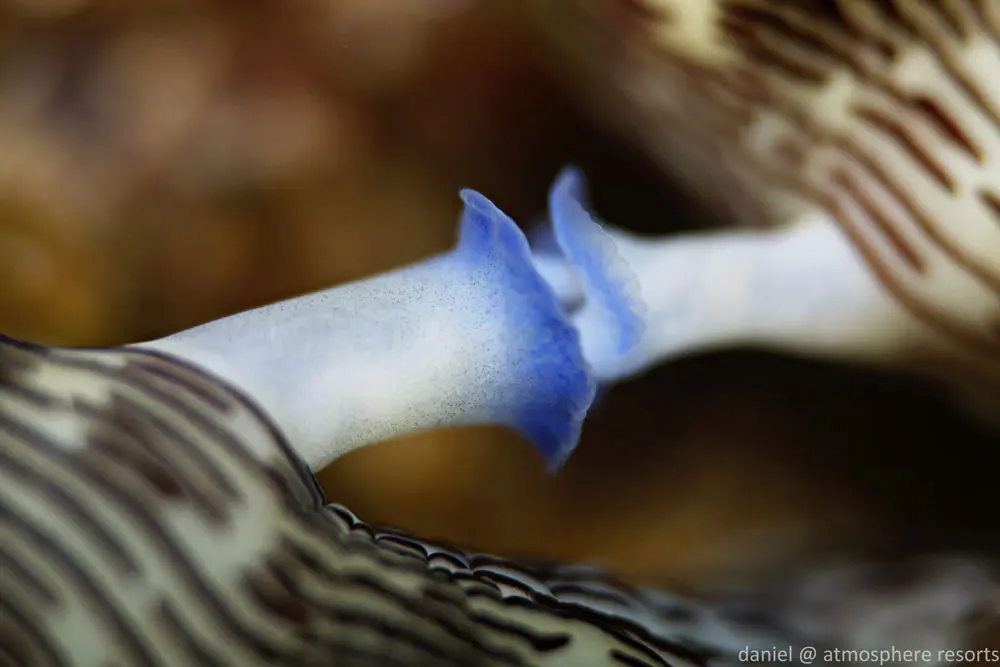Normally when people think of the word slug, they think of something slimy and undesirable, but that’s not the case when it comes to the underwater world. Nudibranchs, kind of like a sea slug, come in virtually every color and combination of colors and are extremely beautiful. Although most of the time they are quite small, they are so awesome that this makes up for what they lack in size. Here are 10 pretty cool things you might not know about nudibranchs.
- Nudibranch comes from the Latin word ‘nudus’ and the Greek word ‘brankhia,’ meaning ‘naked’ and ‘gills’ respectively. This makes sense because the little flower-type protrusions on the back of the nudibranch are the exposed (naked) gills.
- There are over 3,000 species of nudibranchs, from very shallow to depths of 2,500m. They are found in tropical and temperate seas as well as Antarctica, although they are most common in the shallows.
- Some nudibranchs are poisonous while others pretend to be poisonous, which is evident by their vibrant colors. They feed on stinging cells of hydrozoids and store them in the rear of their body for protection. They can also ingest toxins from sponges and become toxic and inedible. Some nudibranchs even produce their own chemicals. Baby frogfish have taken advantage of this and mimic nudibranchs when they are small and vulnerable. Way to go, nudibranchs!

- At least two species of nudibranchs can actually make sounds that are audible to humans! A scientist in 1884 reported sounds from two species in an aquarium that sounded like wire tapping the side of a jar, repeated at intervals. It is unknown whether these sounds are for defense, attracting a mate, or other reasons.
- Nudibranchs are hermaphrodites! That’s right, each one is simultaneously a male and a female – they possess reproductive organs of both sexes. While mating they fertilize each other, although a nudibranch cannot fertilize itself. They then both lay eggs in a beautiful spiral.

- Some nudibranchs are solar-powered. These species harvest algae from plants or coral and house this algae inside of their bodies. This algae derives its energy from light via photosynthesis, which is then used by the nudibranch.
- Most nudibranchs are benthic, meaning they crawl on the seafloor, but there are a few species that are pelagic and live in the water column or on the surface. One of these species digests the stinging tentacles of a Portuguese Man-of-War, transferring them from its gut to the surface of its skin as a defense mechanism.
- The two ‘horns’ of a nudibranch, on top of the head, are actually called rhinophores, which comes from the Greek words ‘rhino’ meaning nose and ‘phore’ meaning carrier. These are basically chemical receptors that allow the nudibranch to find food and mates. Having these two horns sticking out of their bodies makes nudibranchs more visible to predators so they have the ability to withdraw them into their bodies when in danger. If you look closely, they are almost feather shaped, which increases the surface area of the rhinophore, giving them a greater ability to detect chemicals.
- Cannibalism exists in the nudibranch world. Some species eat other nudibranchs, as well as nudibranchs of their own species! This can be done with actual teeth or with digestive enzymes.
- Some humans actually eat nudibranchs. Chileans and some islanders in Russia and Alaska roast or boil sea slugs and sometimes eat them raw. It has been described as “chewing an eraser.”
Explore and learn more about the critters of Dauin in this specialty course. What other underwater critters can you find in Dauin?








Hey guys. i found your article very interesting. Im running a marine life blog on instagram and have a question. Where did you get the info from that humans eat nudibranchs?
Hi Dirk,
The information comes from here: http://factsanddetails.com/world/cat53/sub338/item1256.html and this one has previously taken the information from National geographic login-only site. We are happy to hear that you enjoyed the blog article!
hello,
Neophyte nudibranch nut here. Thanks for this fun
article. Glad to see people using images from seapics.com!
We are happy you liked it!
I am an animal lover and this article is so interesting! They are such beautiful creatures!
Thank you Julia!
Hi thanks for this article. I have a saltwater nano cube that is approximately 3.7 gallons and it has an orange nudibranch inside of it. lt has been established for almost a year now and tonight I was cleaning the glass where the nudi was eating and I tried to move it off of the glass and it broke in two pieces. It is very much still alive but its tail broke off. I’m thinking it will grow back right? And also the tail is still moving, will it grow into another nudibranch??
Hi Niki – it seems like it can grow back. Check out this link – or just ask your aquarium store!
http://www.seaslugforum.net/showall/regener
humans eat nudibranches?!?!
Apparently so, but we are pretty sure it’s not their main diet 🙂
nudibranch fun!!!!~!
Hi, Dan, long time, no see! Just heading home from Coron Lagoon, some very active nudis. Good to see you got in a mention for frogfish. Which reminds me; I reckon nudi eyes are about as easy to see as frogfish antennae. Now I need to find an explanation of that torsional thing in nudis and maybe a decent labelled diagram…
Hey Andy, depending on the species, nudi eyes are easy to see or impossible to see, so you’re right, just like frogfish lures. As for the torsion, this might help http://www.seaslugforum.net/find/torsion
/Daniel
i had learned a lot
Great! 🙂
Wow! I learned a lot about about nudibranchs. I absoloutely love them. They are so colorful and have a lot of amazing properties. I have always wanted to see one. Do you know where i might be able to find one in fremont, california?
Hi! There are lots of nudibranchs in California – divers who visit us always tell us about them and if you google nudibranchs California you’ll find lots. We don’t know where to find them though being quite far and Daniel who wrote the blog is from Florida – so we suggest you contact any local dive center and they will be able to tell you. Good luck!